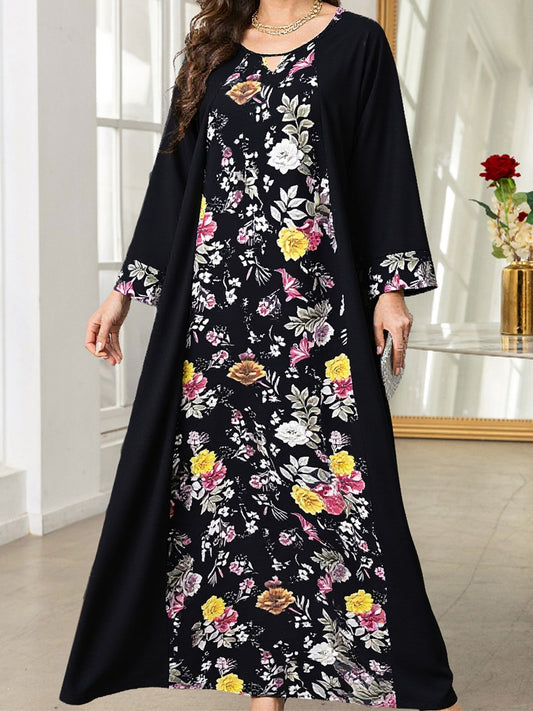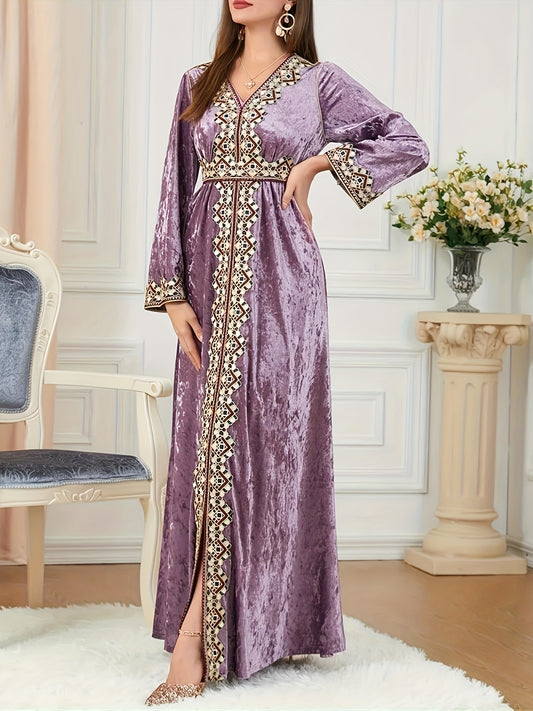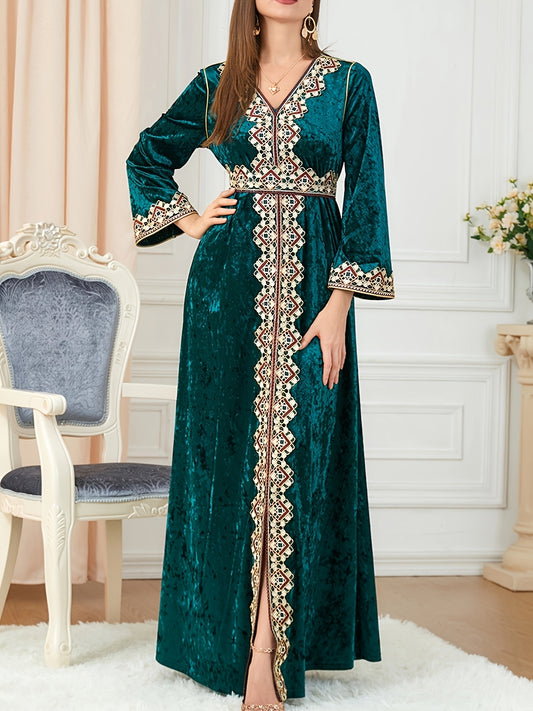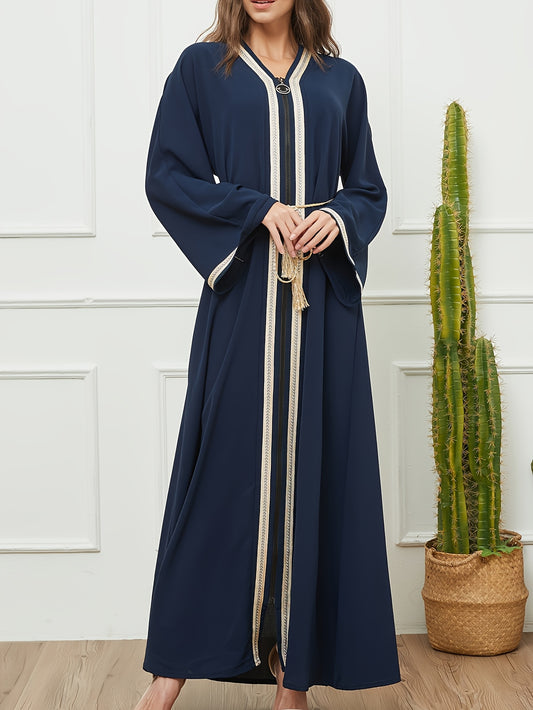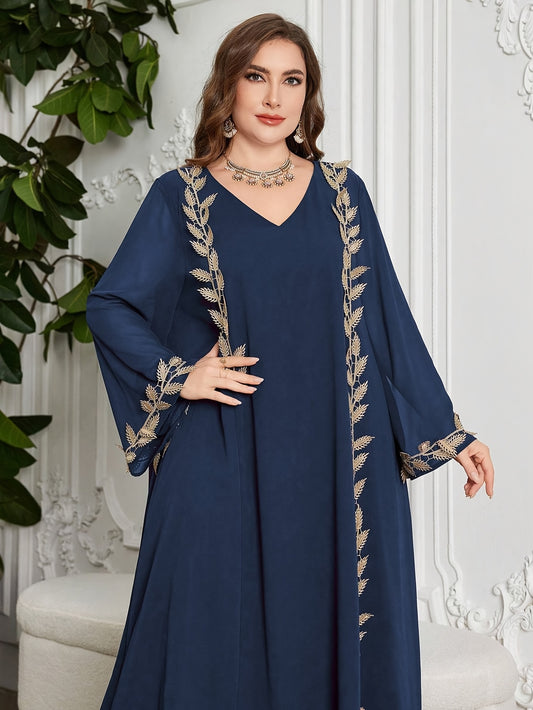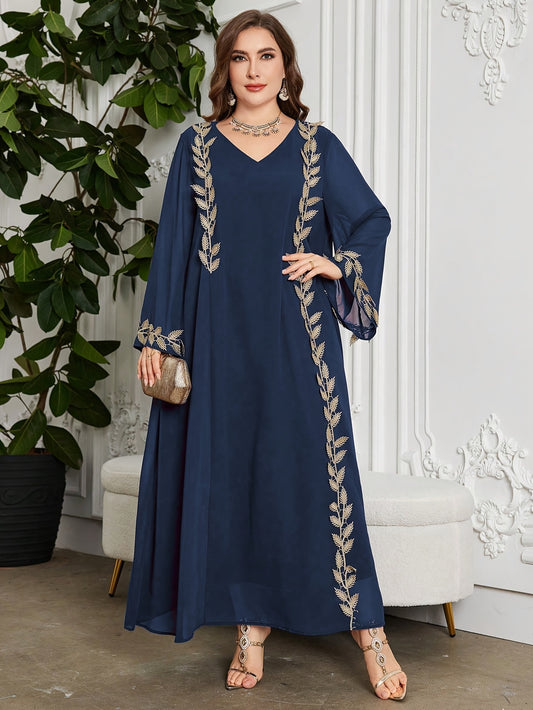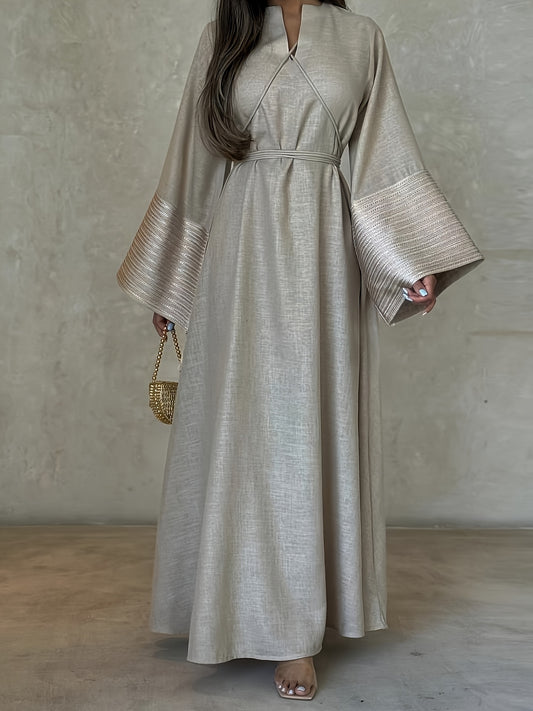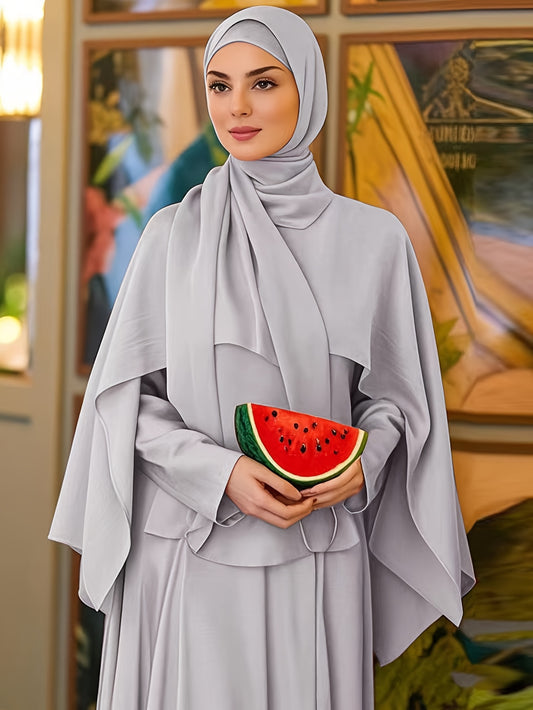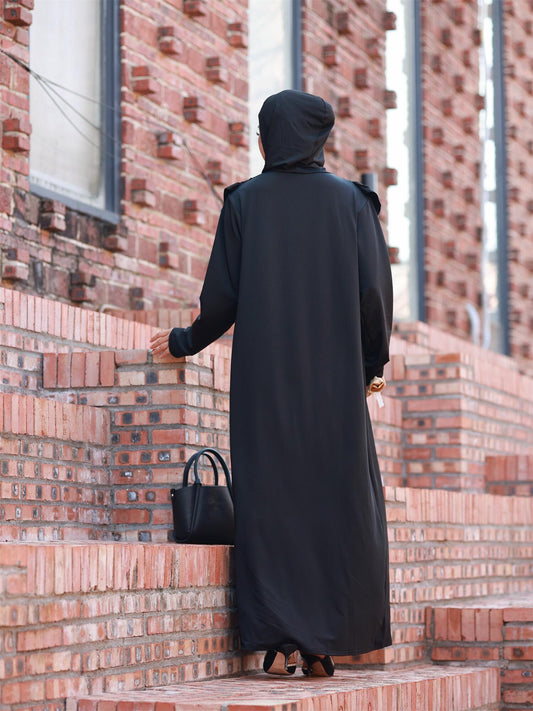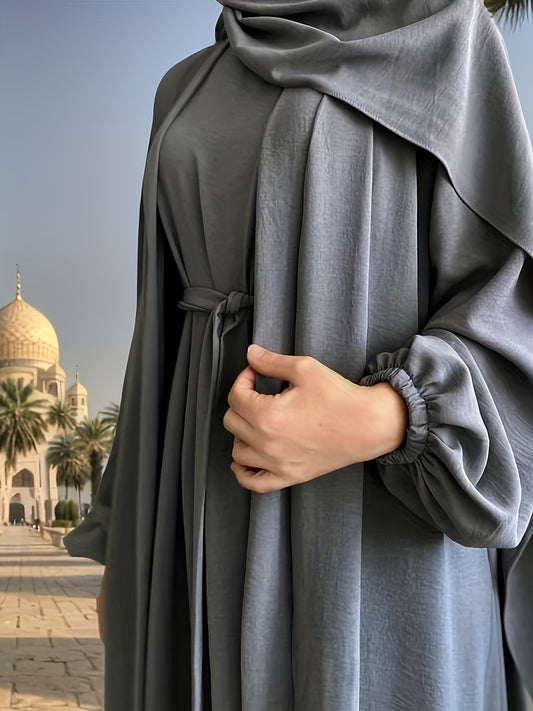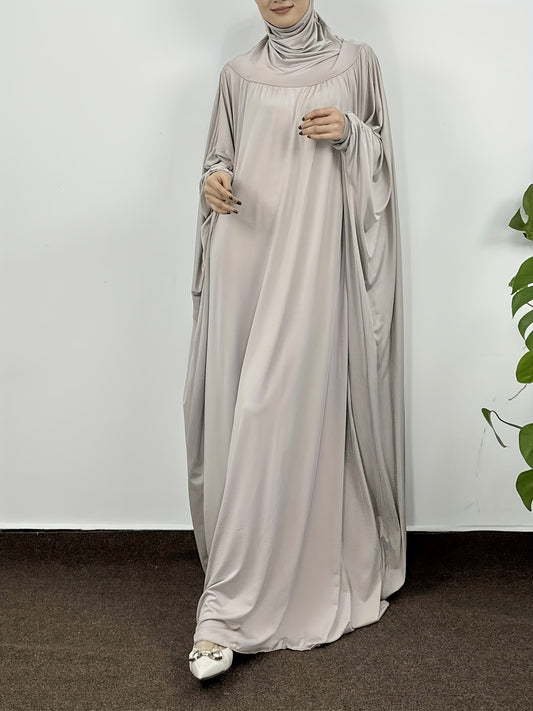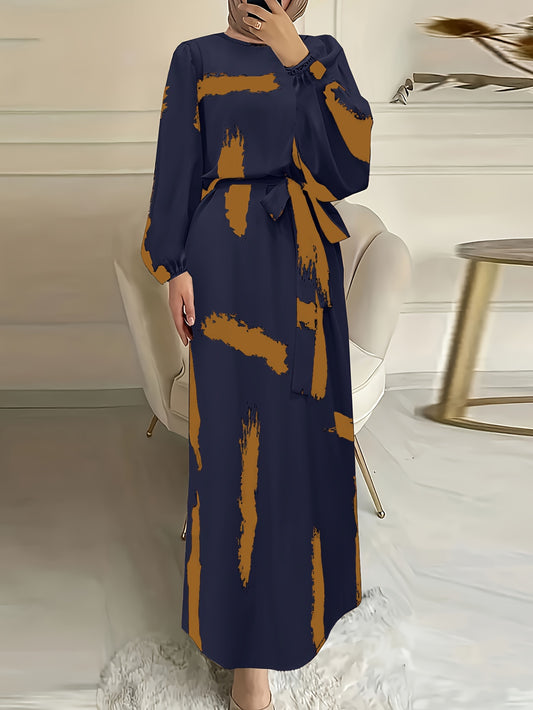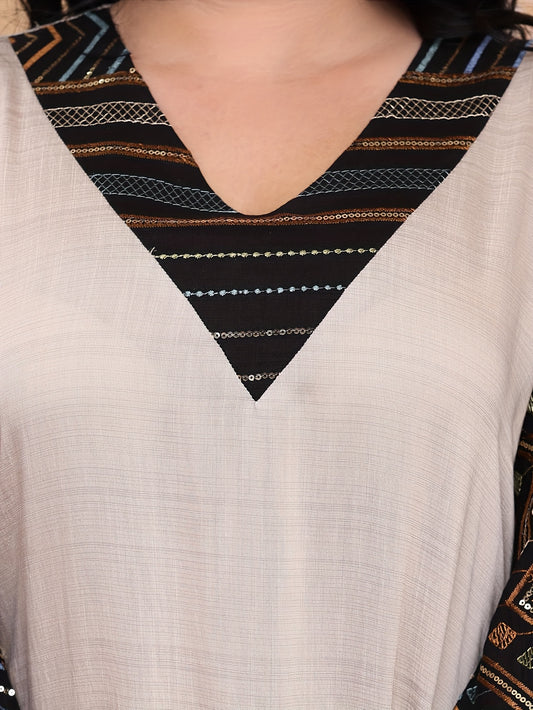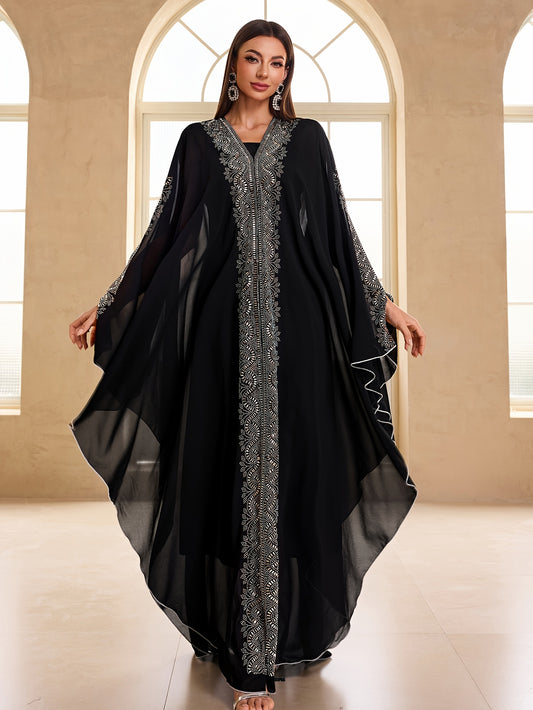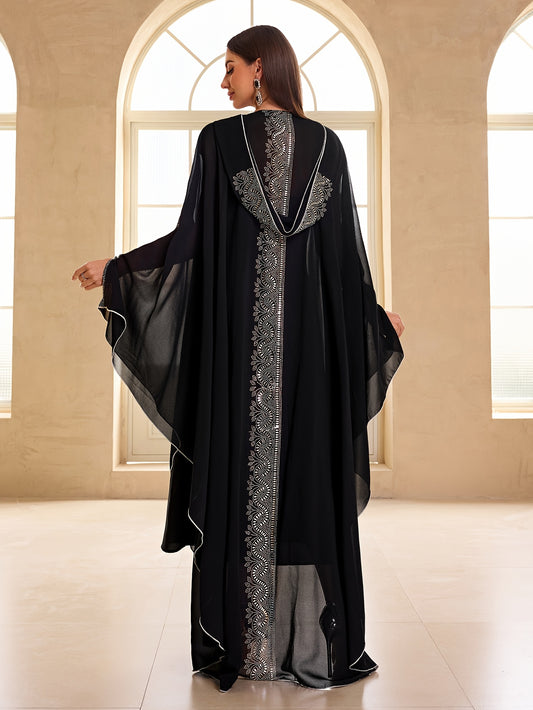About Arabic Kaftan
The Complete Guide To Arabic Kaftans
What Is An Arabic Kaftan
An Arabic kaftan is a flowing, ankle-length garment traditionally worn across the Middle East and North Africa. Distinguished by its modest yet elegant silhouette, the kaftan blends cultural heritage with modern-day style. It is known for its loose fit, wide sleeves, and versatility, making it a popular choice for women who seek comfort without sacrificing elegance. Kaftans can be plain for everyday use or heavily embellished with embroidery, sequins, and beadwork for weddings and formal events. Their adaptability has allowed them to remain a timeless staple across centuries.
Historical Roots Of The Kaftan
The kaftan has a history that stretches back over a thousand years, originally introduced through Ottoman and Arab cultures. Initially worn by men and women alike, it served as both practical attire and a symbol of wealth. Royal families often wore richly decorated kaftans made of silk and brocade, signifying social status. Over time, the kaftan became more associated with women’s fashion, evolving into a garment celebrated for modesty, luxury, and individuality. Today, Arabic kaftans carry forward this rich legacy, blending cultural authenticity with modern interpretations.
Fabrics Used In Arabic Kaftans
Fabric selection is one of the most important aspects of kaftan design. Crepe kaftans are valued for their lightweight drape and wrinkle resistance. Chiffon kaftans bring fluidity and softness, often layered for modesty. Silk and satin kaftans provide a glossy, luxurious appearance, often reserved for formal occasions. Cotton kaftans remain popular for casual, breathable everyday wear. Velvet kaftans, traditionally worn in colder seasons, offer regal depth and warmth. Each fabric reflects a different mood and occasion, giving women the flexibility to choose according to their lifestyle needs.
Styles Of Arabic Kaftans
Arabic kaftans come in a variety of styles, each adapted to specific settings. Traditional kaftans maintain simplicity with solid colors and minimal detailing, suitable for daily wear. Embellished kaftans feature intricate embroidery or beadwork, perfect for weddings or cultural events. Layered kaftans incorporate inner dresses or sheer overlays for added elegance. Open-front kaftans combine practicality with sophistication, often paired with belts to create definition. Maxi-style kaftans bring a gown-like elegance, blurring the line between traditional modesty and contemporary eveningwear.
Everyday Use And Comfort
Kaftans are celebrated for their comfort. Their loose fit makes them ideal for hot climates, allowing airflow while maintaining modesty. Cotton or jersey kaftans are often chosen for home wear, errands, or casual gatherings. They provide a balance between practicality and elegance, requiring minimal effort to style. Because of their versatile cut, kaftans are also suitable for travel, offering both comfort and coverage without the complexity of multiple layers.
Kaftans For Formal Events
When crafted with luxurious fabrics, Arabic kaftans rival evening gowns in elegance. Weddings, Eid celebrations, and festive occasions often call for kaftans with elaborate embroidery, crystal embellishments, or metallic threadwork. These garments highlight artisanal craftsmanship and make a powerful style statement while maintaining modesty. Bridal kaftans in particular are adorned with heavy detailing, making them regal and unique. In many regions, women prefer kaftans over Western gowns for formal events because they combine cultural pride with high fashion.
The Role Of Color In Kaftans
Color plays a central role in kaftan fashion. While black and white kaftans remain timeless, jewel tones such as emerald, ruby, and sapphire create richness for eveningwear. Pastel tones offer softness, often worn in spring and summer. Earthy shades like olive, beige, and terracotta reflect natural elegance. Designers also experiment with ombre transitions, color blocking, and metallic hues to create diversity. Each color carries cultural meaning and personal expression, allowing kaftans to adapt across moods and occasions.
Embellishments And Artistry
Arabic kaftans are often defined by their artistry. Embroidery using gold or silver threads, beadwork, lace inserts, and sequins elevate kaftans from simple attire to luxurious garments. Artisans spend hours, sometimes weeks, perfecting detailing that transforms each kaftan into a unique piece. These embellishments are not merely decorative; they reflect regional identity and traditional techniques passed down through generations. Owning an embellished kaftan often feels like owning a piece of cultural history.
Seasonal Adaptability
Kaftans are versatile across seasons. Lightweight cotton and chiffon kaftans are ideal for hot climates, ensuring breathability and comfort. Satin, silk, and velvet kaftans are suited to colder months or evening occasions, offering warmth and opulence. Designers adapt kaftans to suit seasonal palettes, creating pastel shades for spring and rich jewel tones for autumn and winter. This adaptability ensures kaftans remain relevant year-round, regardless of climate.
Kaftans In Global Fashion
Arabic kaftans have transcended regional boundaries, becoming popular across Europe, North America, and Asia. Luxury designers showcase kaftan-inspired gowns on international runways. Influencers and celebrities often wear kaftans for vacations, red carpets, or cultural events, amplifying their visibility worldwide. This global embrace highlights the kaftan’s timelessness, proving that modest fashion has universal appeal. The garment continues to evolve without losing its cultural roots, balancing tradition with global trends.
Accessories And Styling
Styling a kaftan involves thoughtful accessorizing. Belts are commonly added to accentuate the waist in flowy designs. Jewelry—especially statement earrings or layered necklaces—adds sparkle for formal wear. Scarves or shawls in complementary shades enhance elegance. Footwear choices vary from sandals for casual outings to heels for evening wear. Structured handbags or clutches balance the kaftan’s flowy form. Many women also pair elegant kaftans with Fabulive Hair Extensions, creating hairstyles that complement the outfit’s grandeur without compromising modesty.
Ethical And Sustainable Choices
Sustainability has entered the kaftan industry, with many brands adopting eco-friendly fabrics and ethical production practices. Artisans are increasingly supported through fair trade initiatives, ensuring traditional craftsmanship is preserved while providing livelihoods. Consumers value garments that reflect responsibility, making sustainable kaftans highly sought after. This mirrors trends seen in other industries, including Fabulive’s Hair Extensions, which emphasize ethical sourcing and premium quality.
Confidence And Identity
Wearing an Arabic kaftan connects women to tradition while offering personal expression. For many, it symbolizes cultural pride and individuality. Its flowing design fosters confidence by ensuring modesty without restriction. The ability to choose between simple daily styles and ornate formal versions allows women to express both lifestyle and personality. Much like beauty enhancements, such as Fabulive Hair Extensions, kaftans elevate self-presentation while staying true to identity.
Investment Value Of Kaftans
High-quality kaftans are long-term wardrobe investments. Their timeless designs ensure they remain relevant despite changing fashion trends. Luxurious fabrics and skilled detailing mean they can last years with proper care. Owning a small collection of versatile kaftans allows women to cover casual, professional, and formal needs without constantly buying new outfits. This cost-efficiency makes kaftans as practical as they are elegant.
Final Reflection
The Arabic kaftan represents centuries of tradition blended with modern design. It is a garment of elegance, versatility, and cultural identity. From daily wear to weddings, kaftans adapt seamlessly to different settings, climates, and lifestyles. Their enduring appeal in global fashion demonstrates their universality. Just as Fabulive’s Hair Extensions add confidence and beauty, Arabic kaftans provide grace, modesty, and timeless style for women everywhere.
Customer Reviews
-
Layla, UAE: The kaftan I bought was stunning. The embroidery was detailed and luxurious. ⭐⭐⭐⭐⭐
-
Sophia, USA: Comfortable yet elegant. I wore it to a dinner and received so many compliments. ⭐⭐⭐⭐
-
Amina, UK: The fabric is high quality and the fit is perfect. I love how versatile it is. ⭐⭐⭐⭐⭐
-
Hannah, Canada: Beautiful craftsmanship. It feels regal yet very comfortable to wear. ⭐⭐⭐⭐
-
Fatima, Saudi Arabia: This kaftan is breathtaking. Perfect for Eid celebrations. ⭐⭐⭐⭐⭐
-
Chloe, Australia: I ordered a pastel chiffon kaftan, and it’s perfect for summer gatherings. ⭐⭐⭐⭐
-
Isabella, Italy: Gorgeous detailing. It felt like wearing a piece of art. ⭐⭐⭐⭐⭐
-
Mariam, Qatar: Excellent tailoring and fabric choice. Worth the investment. ⭐⭐⭐⭐
-
Noor, Germany: A timeless piece. The velvet kaftan I purchased is stunning for winter events. ⭐⭐⭐⭐⭐
-
Emily, France: The kaftan flows beautifully and is very flattering. I highly recommend it. ⭐⭐⭐⭐⭐


